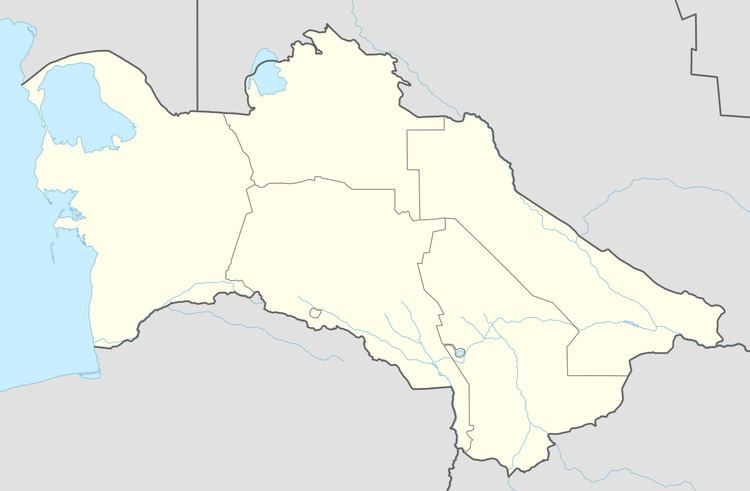Country Turkmenistan Elevation 285 m (935 ft) Province Ahal Region | District Serakhs District Local time Thursday 4:08 AM | |
 | ||
Weather 13°C, Wind NW at 16 km/h, 79% Humidity | ||
Serakhs (also written Saraghs, Serahs, Sarakhs or Saragt) is an oasis city in Ahal Province of Turkmenistan. It is located at latitude 36°31' North; longitude 61°12' East and an altitude of 285m above sea level. It is one of the oases of the ancient Silk Road lying between Merv to the east and Mashhad to the west. In 1989 the city had a population of 9,585.
Contents
Map of Serakhs, Turkmenistan
History
The Serakhs Oasis surrounding the town has been inhabited since 2nd millennium BCE. The main administrative centre was Old Serakhs, located in a slightly raised area somewhat south of the town's present location. At the original site there remain a few brick fragments of the former citadel. The town claims to have been founded in 507 BCE. Although this is considered to be a somewhat arbitrary choice of date, the city duly celebrated its 2500th anniversary in 1993. During Sassanid period a Zoroastrian fire temple was constructed in Mele Hairam, about 15 km east of the town. It has been excavated by Polish archaeologists from the Warsaw University since 1997. In the Seljuk Era a famous school of architects was located in Serakhs, along with a mausoleum commemorating the 11th century sufi Abul Fazl (Serakhs Baba). In 1089 Yarty Gumbez mausoleum was constructed 8 km south of the town, possibly as a burial site for Sheikh Ahmed Al Khady.
The modern settlement was established in 1884 when Serakhs Oasis was annexed by the Russian Empire. It served as a Russian military post at Iranian border. It was inhabited mainly by settlers of Russian and Polish origin. An Orthodox church, which no longer survives, was constructed in the town.
In 2010 monuments of Serakhs, including Old Serakhs, Abul Fazl mausoleum and Mele Hairam temple complex were inscribed on the Tentative List to become UNESCO World Heritage Sites as a part of the "Silk Roads Sites in Turkmenistan" entry by the Turkmen government.
Climate
Serakhs has a hot semi-arid climate (Köppen climate classification BSh), with cool winters and very hot summers. Rainfall is generally light and erratic, and occurs mainly in the winter and autumn months.
Transportation
Serakhs is a crossing point on the Iranian-Turkmen border and the place where bogies must be changed on the freight railway line from Tejen to Mashhad in Iran, which was opened in 1996. The passenger connection between Serakhs and Ashgabat is also operated.
